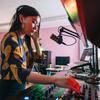Who Are the Top 50 Spotify Artists Today?
In the fast-paced world of music, platforms like Spotify have revolutionized the way we listen to and discover artists. As of 2025, the top 50 Spotify artists represent a mixture of genres, showcasing modern pop, hip hop, and other musical innovations. Let's explore who they are and how artist charts work on Spotify.
Understanding the Spotify Artist Charts
The Spotify artist charts serve as a tool to gauge an artist's popularity on the platform. These charts are established based on streaming data collected from millions of users worldwide. The contemporary Spotify artist charts reflect listening habits and music trends, making them a powerful indicator of an artist’s standing.
Artists strive to feature on these charts because they account for comprehensive metrics such as the number of monthly listeners, the frequency of their tracks being saved to playlists, and how often their songs get shared. A spot in the top 50 Spotify artists ensures immense visibility and paves the way for wider recognition.
Genres Dominating the Charts
While pop continues to reign supreme in Spotify's charts, hip-hop and Latin music have seen a massive surge over the years. Artists like Bad Bunny, Billie Eilish, and more have consistently been on the rise due to their unique sound and massive appeal among younger audiences. Artists with genre-blending tracks seem to have a significant advantage, appealing to a wide array of listeners.
Influence of TikTok on Spotify Artist Rankings
The advent of platforms like TikTok plays a crucial role in shaping who appears on the top 50 Spotify artists lists. Viral challenges and trends often translate into a significant streaming boost for the corresponding tracks on Spotify. Many artists have navigated their way to the charts by strategically utilizing TikTok, illustrating the interconnectedness of digital platforms.
For aspiring musicians, understanding this synergy can offer insights into effective music promotion and chart placements. Platforms like SoundOn provide artists with the tools and distribution networks needed to climb the Spotify charts.
Who Defines the Top 50 Spotify Artists?
As of the latest updates, well-established artists such as Taylor Swift, Drake, and The Weeknd frequently grace the top tiers of Spotify charts. Simultaneously, artists like Doja Cat and Olivia Rodrigo have catalyzed their positions through innovative sounds and charismatic public personas.
Besides these icons, emerging artists are continually entering the Spotify artist charts. Newcomers capable of leveraging cross-platform visibility effectively can see accelerated trajectories in their careers, making strategic playlist positioning vital.
How Monthly Listeners and Streams Play a Role
Two crucial components shape an artist's placement on charts: monthly listeners and streams. The number of monthly listeners denotes unique user engagements, whereas streams illustrate the total number of times an artist's track is played. High figures in either category signal healthy engagement, often boosting artists up the charts.
With Spotify's algorithm using these metrics to refine playlist recommendations, the impact of appearing in algorithmic playlists for a song’s longevity cannot be overstated.
Playlisting on Spotify
Securing a spot on Spotify's curated playlists remains one of the most effective ways for artists to get recognized on a large scale. Whether it's the "RapCaviar" playlist for budding hip-hop artists or "Today's Top Hits" for pop sensations, these lists are a gateway to the top echelons of Spotify's charts.
Navigating Music Distribution and Promotion
To make a mark on the Spotify charts, both established and rising artists require robust music distribution services. Platforms like SoundOn, among others, grant artists access to global audiences by facilitating efficient publishing and promotional strategies.
Conclusion
In conclusion, the top 50 Spotify artists lists of today are as dynamic and varied as ever. The synergy between artists, distribution platforms, and the ever-evolving music industry ecosystems continues to define who captures the global audience's attention.
As the industry evolves, understanding the mechanisms behind the Spotify artist charts could steer new artists toward digital success, encouraging them to engage with platforms designed to amplify their presence across multiple musical vistas.







